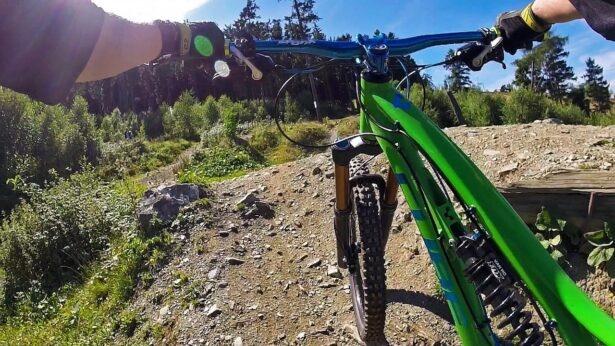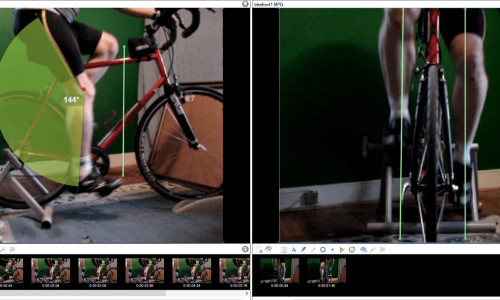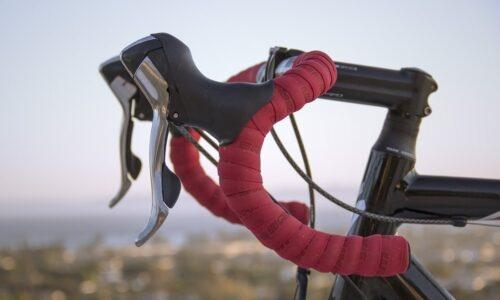Have you ever looked at that grubby strip of tape covering the inside surface of your rim and wonder if you could use a roll of electric tape you have lying around at home to freshen it up?
In this article we explain what bicycle electric tape is designed to do and consider some alternatives that would make a good substitute for it (and some that wouldn’t).
What exactly is rim tape, and what does it do?
Bicycle rim tape is a strip of flexible material that is placed in the rim bed around the circumference of the rim prior to installing inner tubes and mounting tires.
As simple as rim tape is, it actually performs the important function of protecting your inner tubes, which expand in size and have thinner walls once inflated, from abrasion or punctures due spokes protruding through the inside of the rim or holes or any sharp edges around the inner spoke holes or rim joints.
Rim tape is made using various materials, including cloth or fabric as well as vinyl and rubber. Some tapes have an adhesive side to secure it to the rim bed surface. It can come in a single circular piece of tape that is stretched around the rim, known as “looped tape”, or a roll of tape that can be cut to the required length.

In the days of single-wall rims, when the spokes where directly inserted into the inside of the rim, common practice was to use thick rubber rim tape, given that the tape goes directly over the nipples and needed to be thick enough to protect the inner tubes.
Modern rims are double-walled, that is they have a recess where the spokes are inserted and the spoke holes have these sharp edges that need to be covered with the appropriate width of rim tape, while still being thin enough to prevent interference with the tire bead and rim bead hook interface.
Tubeless setups have a special type of rim tape, simply known as tubeless tape. Like regular rim tape, tubeless tape comes in various widths, but it is made using materials that ensure better adhesion to the rim bed to prevent air loss. Tubeless tape is also resistant to some chemicals present in tubeless sealants.
Can I use any tape instead of rim tape?
The answer is: it depends. Some non-bicycle specific tapes make good substitutes, some don’t (we discuss this in more detail further on in this article). Many household use tapes are not, in fact, great substitutes for rim tape because the dimensions can be either too narrow, too wide or otherwise have other properties that would make them not well suited for use on bicycle rims.
Before we have a look at some good (and not so good alternatives) to bicycle rim tape, let’s answer a more fundamental question…
Can I ride my bike without rim tape?

There is certainly nothing to prevent you from riding your bike with no rim tape fitted to your wheels, but it is also not good practice to do so.
As soon as you inflate your inner tubes, they will start expanding into the spoke holes, and as previously explained, the expansion of the rubber tubes makes them susceptible to friction against sharp metal edges inside your rim, and accordingly more puncture-prone. With this in mind, rim tape is one of those “prevention is better than the cure” pieces of kit.
What are some good alternatives to bicycle rim tape?
For tubed wheels:
- Hockey tape: Hockey tape is widely available, made of cloth and comes in two sizes. These properties make hockey tape very similar to classic bicycle cloth rim tape, and thus makes it suitable for use as rim tape on tubed wheels.
- Electrical tape: Electrical tape designed to insulate electrical wires and connections works well as rim tape. One caveat here is that not all electrical tapes are created equal.
The very cheap varieties of electrical insulation tape have bad adhesion, tend to wrinkle up when stretched and are often not wide enough for modern rims. If you have narrower rims and have good quality electrical tape on hand in an appropriate width, it should work fine! (pro tip: considering how thin most electrical tapes are, you might have to do a double wrap)
For tubeless wheels:
- Filament reinforced strapping tape: Strapping tape is used for sealing boxes and – you guessed it – strapping stuff together. Given this function, high-quality strapping tapes are often made to be strong with good adhesion, comes in many widths and can be removed without leaving significant residue.
These properties make reinforced strapping tape and excellent alternative to bicycle tubeless rim tape. It is rumored that one of the most popular bicycle tubeless rim tape brands is actually a rebranded industrial strapping tape (pro tip: I’ve had very good experience with using Scotch 8896 strapping tape for some of my tubeless wheels)
- Old inner tubes: This pile of old punctured inner tubes you have bundled up in your bike stuff box (that you’ve been meaning to patch but never got around to) might finally be useful! You can make excellent rim tape if you carefully trim an old tube to size, preserving the loop structure.
There is even a method of using old inner tubes one size down from your wheel diameter as tubeless rim liners for older rims that don’t have a great tubeless seal (often known as the “ghetto tubeless” method).
What’s not a good alternative?
Not all general use tapes work well as rim tape for all applications. For example, when it comes to tubeless rim tape, Gorilla Tape is a popular alternative, but it is actually too thick to be used in some rims and blocks the bead hook which make it difficult to install the tire or get a good seal.
Additionally, the aggressive adhesive leaves a residue that is often difficult to remove from the rim when the time comes to replace the tape. Tapes similar to Gorilla Tape are also fabric tapes, and while they may work well for tubed wheels, tubeless rim manufacturers usually recommend tapes made from non-porous polymers.
How do I determine the correct rim tape size for my wheels?
Rim width is the primary consideration in determining the necessary size of rim tape, followed by rim diameter if you’re buying pre-cut (looped) rim tape.
In days gone by when we only had very limited standard rim width choices, tape used to come in fabric strips that were available in two or three standard widths from 15-19mm. Nowadays, with the wide range of rim types and widths available, rim tapes also come in many widths to match.
It is important to get the right width of rim tape for your wheels. Tape that is too narrow will fail to fully cover the spoke holes, increasing risk of punctures.
Tape that is too wide will prevent you from fully seating the tape onto the rim bed between the rim walls, and possibly encountering difficulties in installing the tube and mounting your tires.
Your rim width can be found by checking the specifications listed by your wheel/rim manufacturer, or often by simply looking for the specifications listed on the outside wall of your rim. Failing that, with your tire unmounted you can simply measure the inside width of your rim between the rim walls.
Final thoughts on rim tape alternatives
In an emergency situation or if you don’t have access to bicycle-specific rim tape, you can certainly try using whatever tape you have on hand (any tape is better than no tape!).
That being said, when you’re shopping for new rim tape, it is always best to buy tape designed for use on bicycle rims rather than an alternative that may or may not work as intended.
Admittedly, bicycle rim tapes seem to be a bit more expensive than general use tape that you can buy in big inexpensive rolls (like electrical tape), but you can’t put a price on the peace of mind of knowing that you have the right tape for the job which makes for the most reliable setup for your bike.
The key thing here is to use the right tape for the job. Using tape designed for a different application may or may not work for your tubed or tubeless setup, so why risk it? Always choose to use the tape designed for your bicycle rims and recommended by the manufactures.

Hani Morsi is a seasoned multi-discipline cyclist with a particular liking for mountain and gravel bikes. Hani is also a mountain bike coach, trail builder and experienced bike mechanic.



Thank you. The recommendations were very helpful.